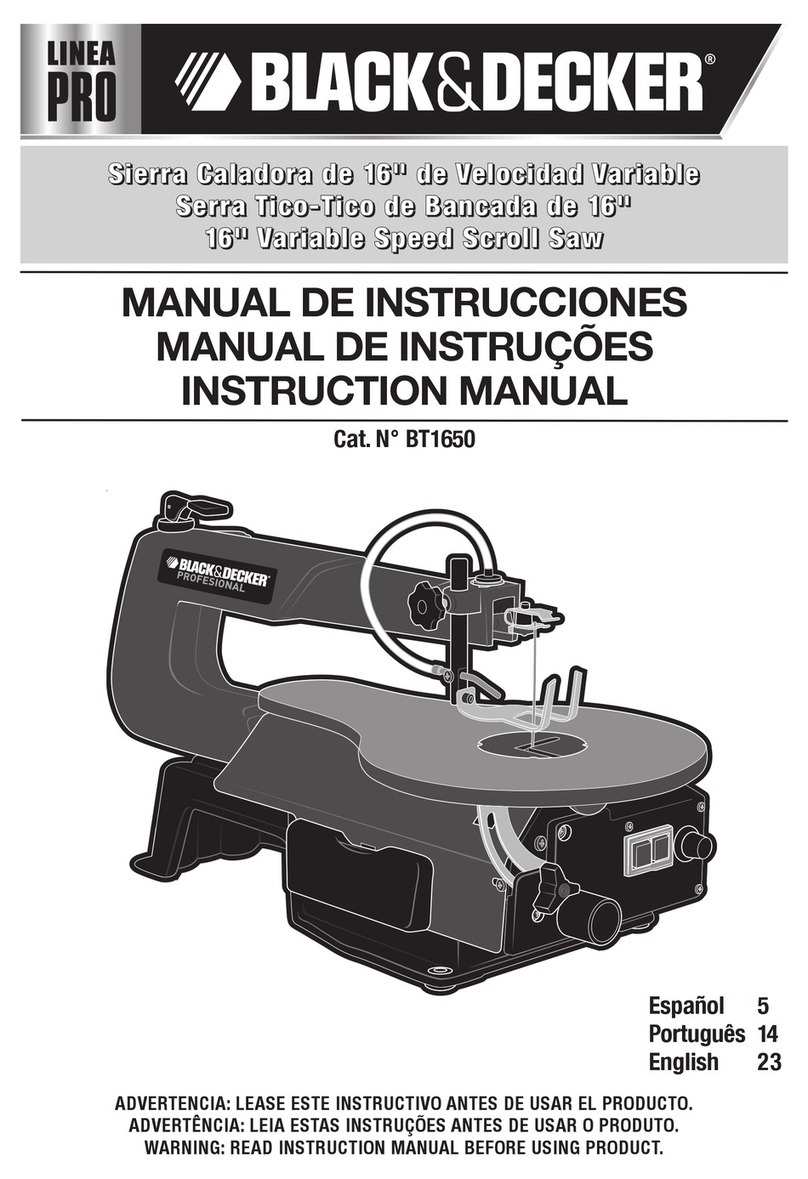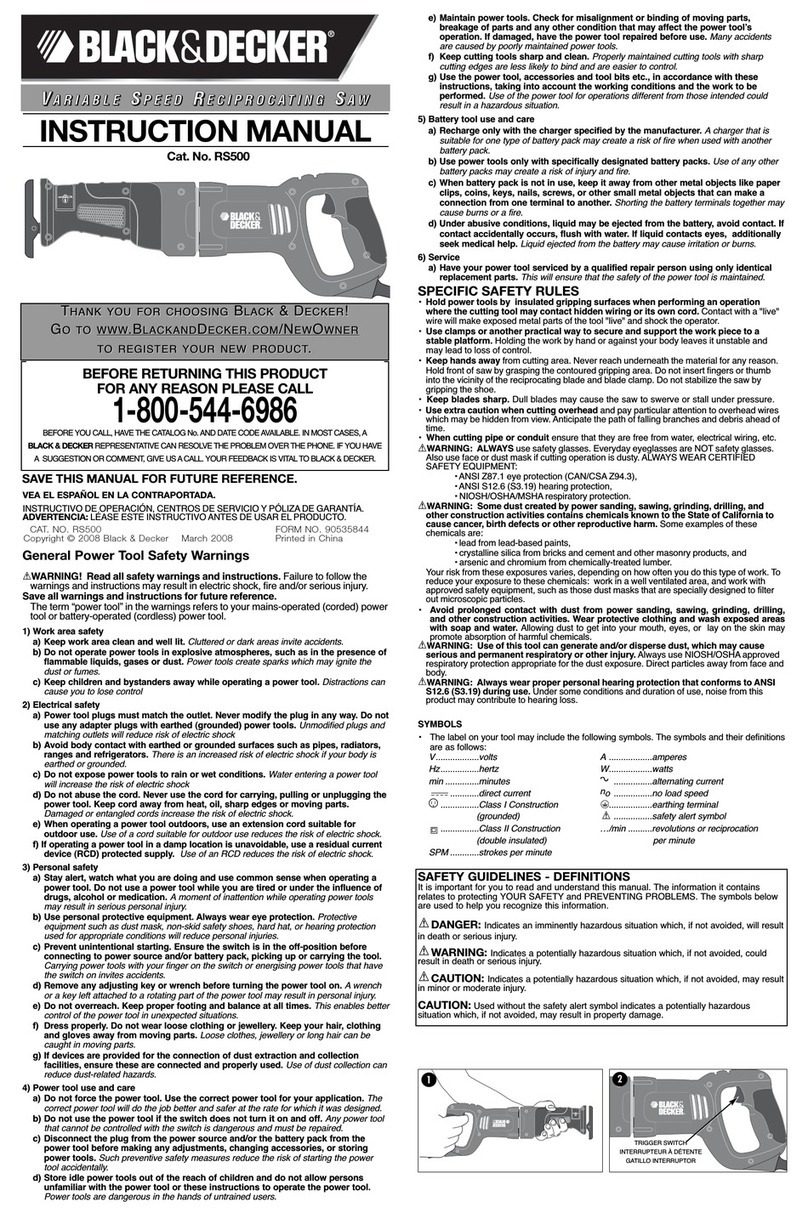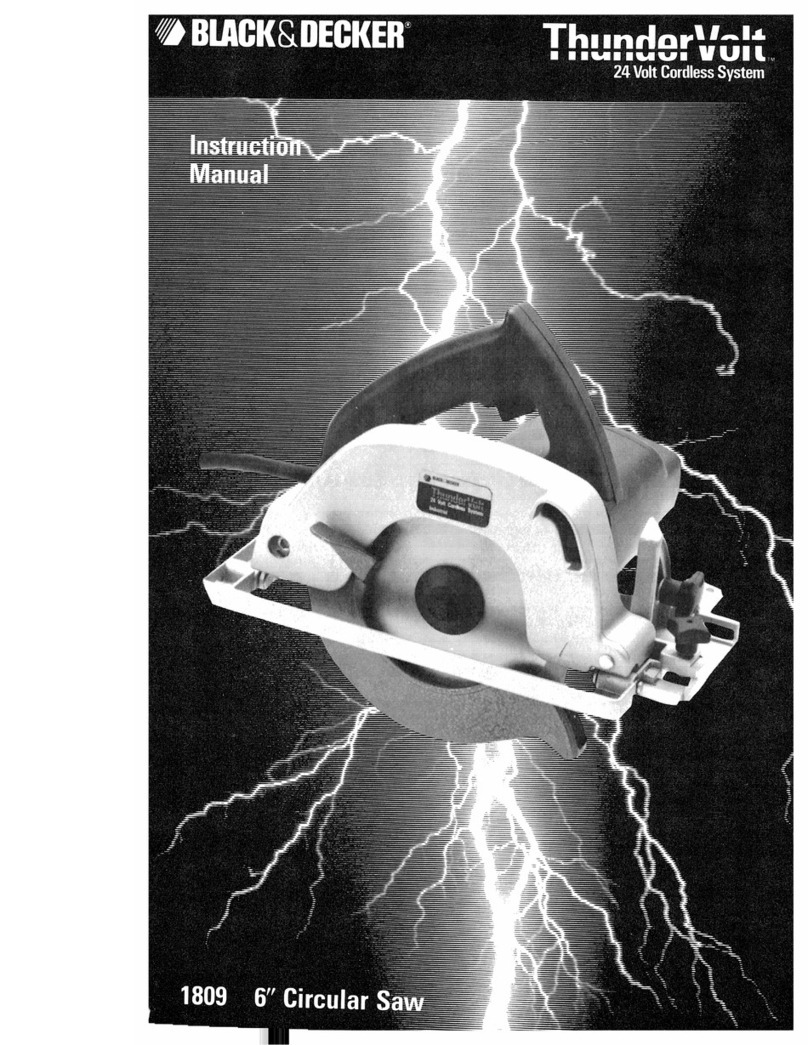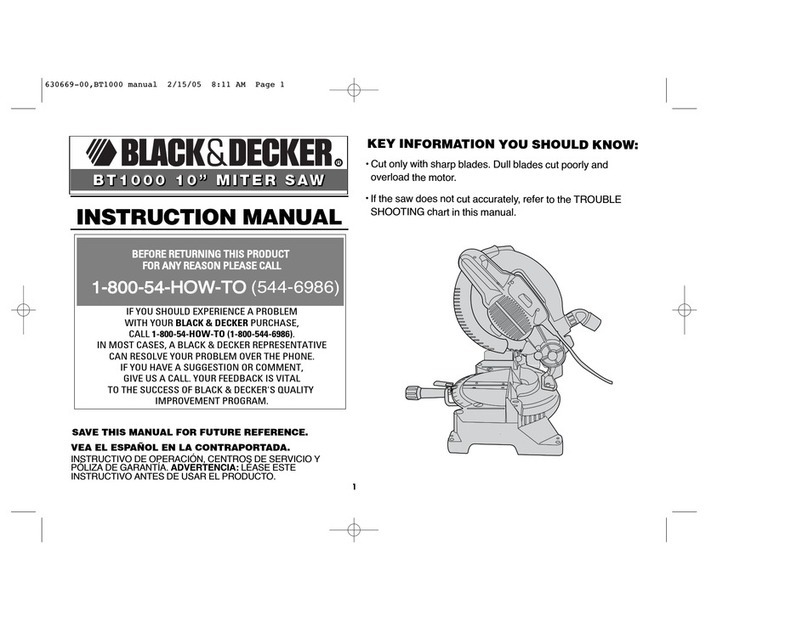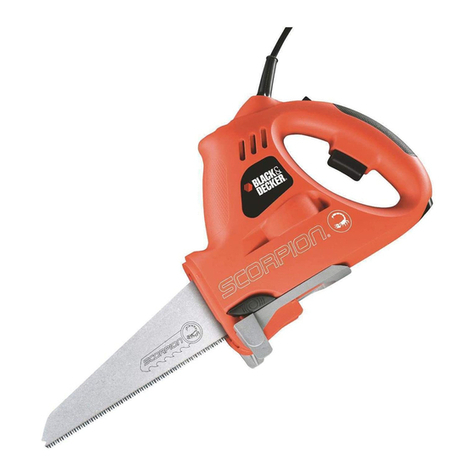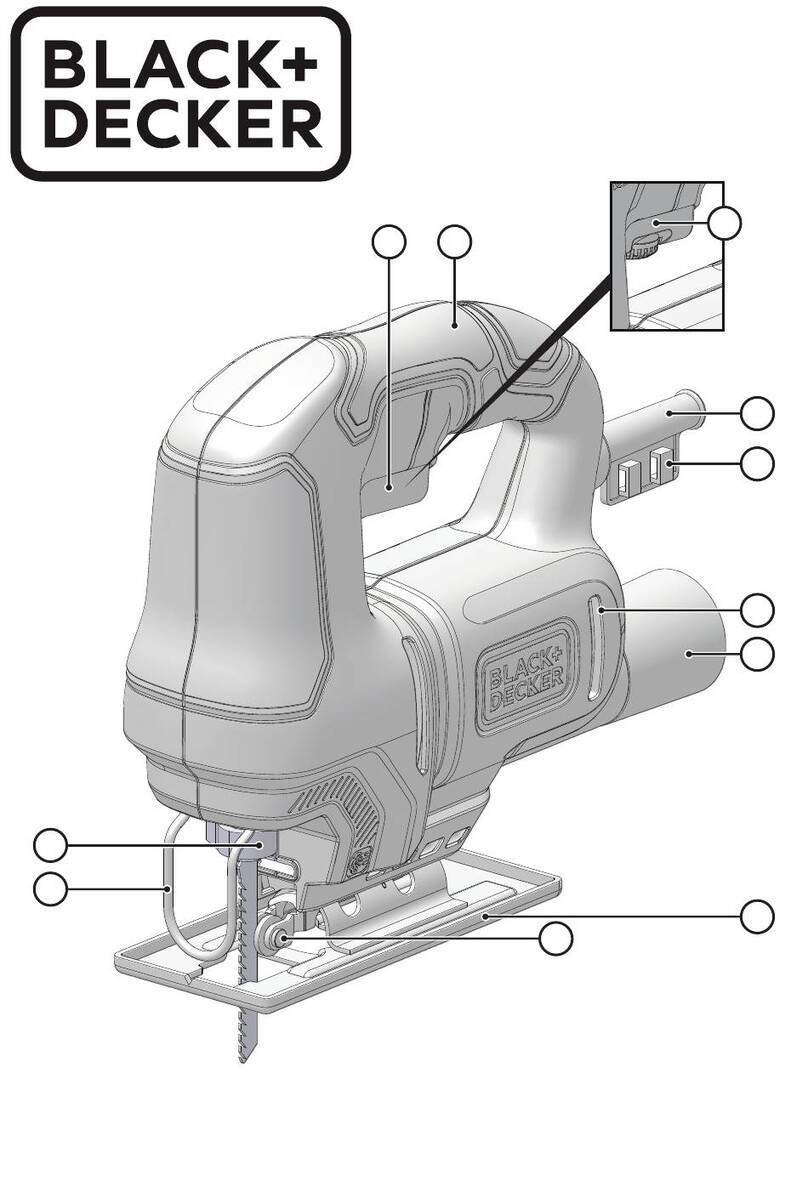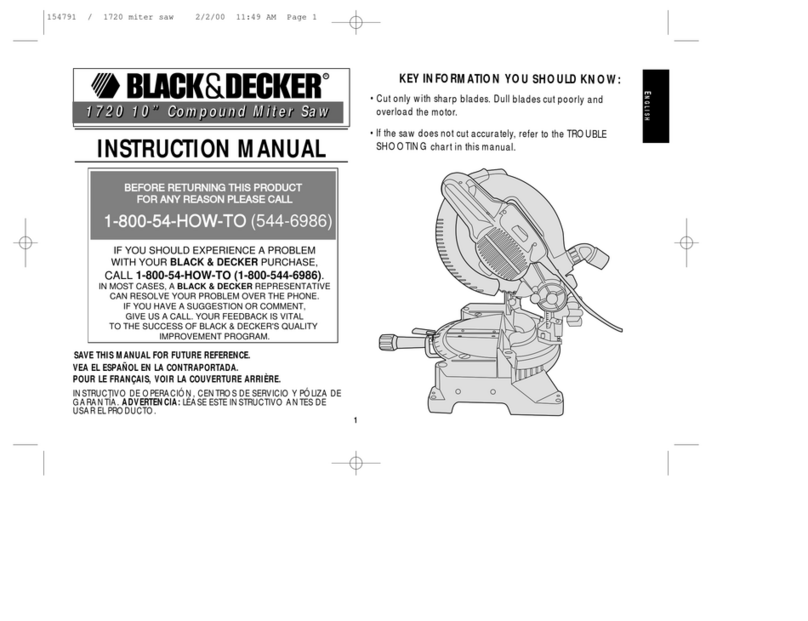9
The blade guard on your saw will automatically raise
when the arm is brought down; it will lower over the
blade when the arm is raised. The guard can be raised
by hand when installing or removing saw blades orfor
inspection of the saw. Never raise the blade guard
manually unless the machine is switched off.
Checkperiodicallythatthemotorairslotsarecleanand
free of chips.
Do not work with material containing asbestos.
Asbestos is considered to be carcinogenic.
Never make the warning signs on the power tool
unrecognisable.
Never stand on the power tool. Seriousinjuries could
occur when the power tool tips over or when coming in
contact with the saw blade.
Donottakeholdofthesawbladeafterworkingbeforeit
has cooled. The saw blade becomes very hot while
working.
Advance the saw blade against the workpiece only
when it is switched on. Otherwise, the danger of kick-
back exists when the saw blade catches in the
workpiece.
Theintendeduseisdescribedinthisinstructionmanual.
Theuseofanyaccessoryorattachmentorperformance
of any operation with this tool other than those
recommendedinthis instructionmanualmay presenta
risk of personal injury and/or damage to property.
Never place hands near cutting area. Keep hands
outsidethe“NoHandsZone”whichincludesentiretable
and is labelled by “No Hands” symbols.
Toavoidinjury from materialsbeingthrown, unplugthe
sawtoavoidaccidentalstarting,andthenremovesmall
materials.
Before use and after any maintenance the blade guard
must be checked to ensure proper function. This test
must be performed with the saw switched off and
unplugged. The arm must be raised and lowered to
ensure the guard covers the blade and the blade does
not contact the guard. If the guard fails to operate
correctly, have your power tool serviced by a qualified
repairagent.CallBlack&Deckercustomerservicesfor
you nearest service agent.
Residual risks
The following risks are inherent to the use ofsaws:
Injuries caused by touching the rotating parts.
Even with the application of the relevant safety regulations
and the implementation of safety devices, certain residual
risks cannot be avoided, these are:
Impairment of hearing.
Risk of accidents caused by the uncovered parts of the
rotating saw blade.
Risk of injury when changing the blade.
Risk of squeezing fingers when opening the guards.
Health hazards caused by breathing dust developed
when sawing wood, especially oak, beech and MDF.
Additional safety instructions for lasers
This laser complies with class 1M according to IEC
60825-1:2007. Do not replace a laser diode with a different
type. If the laser is damaged, have the laser repaired by an
authorisedrepairagent.Donotusethelaserforanypurpose
other than projecting laser lines.
Neverlookintothelaserbeamdirectlyandintentionally.
Do not use optical tools to view the laser beam.
Do not set up the tool where the laser beam can cross
any person at head height.
Do not let children come near the laser.
Warning! Avoid direct eyecontact. Laser radiated when
laserguideisturnedon.Avoiddirecteyecontact.Alwaysun-
plug the mitre saw from power source before making any
adjustment.
A laser pointer is not a toy and should not come into
hands of children. Misuse of this appliance can lead to
irreparable eye injuries.
Anyadjustmenttoincreasethelaserpowerisforbidden.
Any liability for damages as a result of not following
these safety instructions will be rejected.
When using the laser pointer, do not point the laser
beamtowardspeopleand/orreflectingsurfaces.Evena
laser beam of lower intensity may cause eye damage.
Therefore, do not look directly into the laser beam.
Thelaserpointerincludesnoservicingcomponents.Do
not open the housing otherwise the guarantee is void.
Safety of others
This tool is not intended for use by persons (including
children) with reduced physical, sensory or mental
capabilities, or lack of experience and knowledge,
unless they have been given supervision or instruction
concerning the use of the appliance by a person
responsible for their safety.
Children should be supervised to ensure that they do
not play with the appliance.
Vibration
The declared vibration emission values stated in the
technical data and the declaration of conformity have been
measured in accordance with a standard test method
provided by EN 61029 and may be used for comparing one
toolwithanother.Thedeclaredvibrationemissionvaluemay
also be used in a preliminary assessment of exposure.



